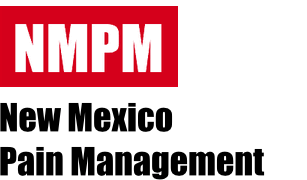Ultrasound imaging (sonography) is generally the highest resolution form of radiology for diagnosing tendons, many ligaments and other joint structures. For example, our high frequency ultrasound imaging of shoulder rotator cuff and knee collateral ligaments provides up to five times more resolution and detail than MRI. NMPM’s Dr. Jonas Skardis was trained in musculoskeletal diagnostic ultrasound imaging by the faculties of the University of Michigan Radiology Department, the Mayo Clinic, and Thomas Jefferson University Hospital, among others. He is nationally credentialed: Registered in Musculoskeletal Sonography (RMSK) by APCA, the Alliance for Physician Certification & Advancement. He also serves on the Peer Review Panel of the Journal of Ultrasound in Medicine and has twice been named Distinguished Reviewer.
Interventional pain management, our focus at New Mexico Pain Management, is often best performed with ultrasound visualization guiding the procedure, looking inside the body as the procedure is occurring, and directing the physician visually. In this manner, nerve blocks are safer and more exact, requiring less local anesthetic. Such real time visual guidance allows us to place PRP stem cell grafting material very precisely within small tears in the shoulder rotator cuff, elbow or ankle tendons, or knee ligaments. Such ultrasound procedure guidance, also known as sonographic needle guidance, enhances the use of many of our procedures, and without such radiologic needle guidance, some of the most precise of our procedures could not be carried out.
Click here for a video about the unique advantages of in-office musculoskeletal ultrasound. The speaker is Levon Nazarian, MD of Thomas Jefferson Hospital in Philadelphia, Professor and Vice Chairman of the Department of Radiology and recent Editor Emeritus of the Journal of Ultrasound in Medicine. He reinforces the fact that high frequency ultrasound, like that used at NMPM, is of higher resolution than MRI, thus showing more detail, more information, than is seen on MRI. He also tells a story about how some crucial findings can be simply not seen on MRI and found with ultrasound, in part due to the ability to move the joint while using ultrasound.
Click here for a video about the growing use of ultrasound in sports medicine. The speaker is Jay Smith, MD of the Mayo Clinic. He is Professor and Vice Chairman of the Department of Physical Medicine and Rehabilitation, Director of Musculoskeletal Ultrasound and Regenerative Sports Medicine at the Mayo Clinic Sports Medicine Center (one of the places at Mayo Clinic where PRP is practiced), Director of Regenerative Medicine at the Mayo Clinic Rehabilitation Medicine Research Center (one of the places where Mayo Clinic researches PRP), and a former US Winter Olympics Team Physician.
Click here for a video about how the US is behind the rest of the world in adoption of musculoskeletal ultrasound. The speaker is Flemming Forsberg, PhD, Ultrasound Physicist, Thomas Jefferson University Hospital.
To add to Dr. Forsberg’s comments, it is interesting that even in wealthy European countries, a patient may have to wait a year for an MRI for non-emergency purposes. Why? In those medical systems, MRI is considered a wasteful allocation of the system’s money for conditions that can be diagnosed much less expensively by ultrasound. As a result, there are many fewer MRI machines per capita in such countries, and many more ultrasound machines per capita. Whole countries in Europe have only a modest amount of MRI machines. Meanwhile, Santa Fe, with a population of only 84,000, used to have 4 very expensive MRI machines, recently reduced to 3. Expensive machines justify expensive fees, and the system is geared to guiding patients to these expensive MRI scans. There is more profit in MRI. Meanwhile, in Santa Fe, musculoskeletal ultrasound is only performed at NMPM, by one radiologist at Santa Fe Imaging Center, and by two other private physicians. This is an upside-down picture compared to Europe where the system is to use MRI much more sparingly, and to use musculoskeletal ultrasound much more extensively. Perhaps this distortion is due to the profit oriented medical system here in the United States? Ultrasound is great for savings, and not for any great profit.
Get more information at UltrasoundFirst.org, a non-profit educational website dedicated to explaining how ultrasound is frequently a safer, more effective and more affordable method than X-ray, CT scan, or MRI.


